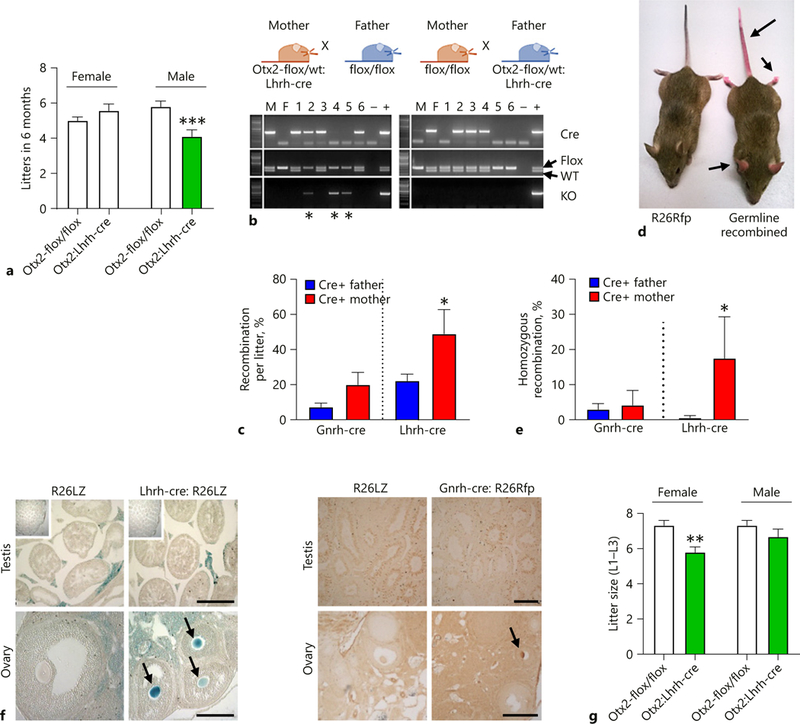Fig. 6.

Otx2:Lhrh-cre males, but not females, are subfertile. a A fertility assay established the number of litters born in 6 months (n = 7–15). b Example of PCR showing germline recombination when Lhrh-cre is transmitted by the dam (*) in the Otx2:Lhrh-cre strain. Due to lethality of pups with homozygous recombination of the Otx2 allele, we were unable to calculate whether the recombination was mono- or bi-allelic in this mouse strain. To establish the re-combination frequency and whether it was mono- or bi-allelic, we analyzed recombination in Six6:Lhrh-cre and Six6:Gnrh-cre mice because Six6-flox mice with homozygous recombination is viable. Histograms showing (c) the average percentage of pups with germ-line recombination of the Six6-flox allele when the indicated Cre-alleles were transmitted from the father (blue) or mother (red), and (e) the percentage of pups with homozygous recombination. n = 3–14 litters. Two-way ANOVA followed by a Tukey’s multiple comparison test. * p < 0.05 as compared to opposite sex of the same mouse strain. d Picture showing germline recombination when the Gnrh-cre was transmitted by the dam in the Gnrh-cre:Rosa26-Td-Tomato mouse line (arrows). f X-gal staining in Lhrh-cre:Rosa26-LacZ (left images, blue staining) and immunohistochemistry to detect the TdTomato protein in Gnrh-cre:Rosa26-TdTomato (right images, brown staining) revealed recombination within the female germline (arrows, ovary). The square in the top left corner of the testis shows intact testis morphology (×4). Scale bar 50 μm. g Average litter sizes generated of Otx2-flox/flox (control) and Otx2:Lhrh-cre mice (n = 40–76). M, male; F, Female; WT, wild-type allele; KO, knock-out allele; Flox, floxed allele; –, negative control; +, positive control. a, g Student t test compared to control of either sex, ** p < 0.01; *** p < 0.001.
